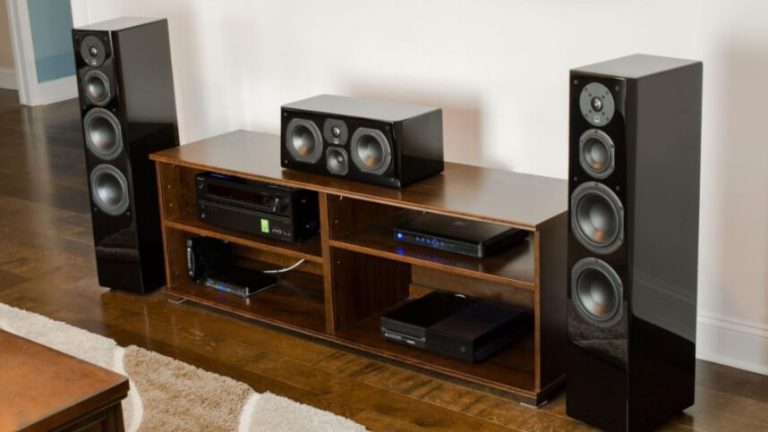
How architectural design shapes building acoustics is a critical consideration in creating functional and comfortable spaces. Sound plays a vital role in our experience of the built environment, influencing our productivity, well-being, and overall perception. Whether it’s a bustling office, a serene library, or a vibrant concert hall, the way sound behaves within a space is directly tied to its architectural design.
By understanding the interplay between design elements and acoustic principles, architects can craft spaces that not only look good but also sound exceptional.
The Relationship Between Architecture and Acoustics
Architectural design and acoustics are intrinsically linked. Sound waves interact with the physical environment, and these interactions determine how sound behaves within a space. By understanding these interactions, architects can manipulate sound to create desired acoustic effects.
Several key principles govern this relationship:
- Absorption: This refers to the process by which sound energy is converted into heat within a material. Porous materials like carpets, acoustic panels, and even thick curtains effectively absorb sound, minimizing reflections and reducing reverberation. For instance, fiberglass insulation within walls absorbs sound trying to pass through, improving sound isolation.
- Reflection: Hard, non-porous surfaces like glass, concrete, and polished wood reflect sound waves, causing echoes and potentially amplifying certain frequencies.
This is a desirable characteristic in concert halls where sound needs to be projected to the audience but can be problematic in offices where it leads to noise buildup.
- Diffusion: Uneven surfaces and objects scatter sound waves in different directions, preventing sound concentration and creating a more uniform sound field. This is achieved through elements like textured ceilings, diffusers, and strategically placed furniture. Diffusion helps eliminate echoes and creates a more natural sound.
- Transmission: This refers to the passage of sound through materials like walls, windows, and doors.
Minimizing sound transmission is crucial for privacy and noise control. Factors influencing transmission include material density and construction techniques.
A crucial concept related to these principles is reverberation time (RT). This measures the time it takes for sound to decay by 60 decibels after the sound source stops.
A longer RT creates a “live” acoustic environment, suitable for music, while a shorter RT is preferred in spaces requiring speech clarity.
Key Architectural Factors Influencing Acoustics
Materials
Material selection is fundamental to acoustic performance. Hard materials like marble and concrete reflect sound, while softer materials like fabric and foam absorb it. Acoustic panels made of specialized materials like mineral wool or fiberglass are highly effective sound absorbers, often used in recording studios and home theaters.
Understanding the absorption coefficient of different materials allows architects to tailor the acoustic environment to the specific needs of a space.
Geometry
The shape and angles of a space significantly impact sound behavior. Concave surfaces can focus sound waves, creating “hot spots,” while convex surfaces scatter sound more evenly. Irregular shapes and angled walls help diffuse sound, preventing unwanted reflections and echoes.
For example, in concert halls, carefully calculated curves and angles direct sound towards the audience, enhancing the listening experience.
Room volume and surface area are also critical. Larger volumes generally lead to longer reverberation times, while smaller spaces can amplify low frequencies. The ratio of surface area to volume impacts the overall sound absorption in a room.
Space Layout
The layout of a space, including room dimensions, ceiling height, and the placement of partitions and furniture, influences sound distribution.
Open-plan offices, for example, require careful planning to minimize noise distractions. Strategically placed partitions and sound-absorbing furniture can help create zones with different acoustic properties, promoting both collaboration and focused work.
Acoustics in Different Building Types
Performance Spaces
Concert halls, theaters, and opera houses require meticulous acoustic design to ensure optimal sound quality for every seat. Factors like reverberation time, sound distribution, and background noise levels are carefully controlled.
Architects often collaborate with specialized acoustical consultants to achieve the desired acoustic signature for each venue.
Commercial Spaces
In offices, classrooms, and retail environments, reducing noise distractions is essential for productivity, learning, and customer satisfaction. Sound-absorbing materials, strategic layout design, and proper sound masking systems can help create comfortable and functional spaces. Adhering to standards like LEED (Leadership in Energy and Environmental Design) and WELL Building Standard, which incorporate acoustic criteria, further enhances the quality of commercial spaces.
Residential Spaces
Creating peaceful and private living environments is crucial in residential design.
Techniques like soundproofing walls and ceilings, using double-glazed windows, and incorporating sound-dampening materials help minimize noise intrusion from outside sources and between rooms. Careful consideration of material choices and construction techniques contributes to a more tranquil living experience.
Techniques Architects Use to Enhance Acoustics
Acoustic Panels
Acoustic panels are specialized sound-absorbing materials designed to control reverberation and reduce noise levels. They come in various shapes, sizes, and materials, catering to diverse aesthetic and acoustic needs.
For example, fabric-wrapped panels can blend seamlessly into a room’s decor, while perforated metal panels offer a more industrial look. Different types of panels are designed to absorb specific frequency ranges, allowing for tailored acoustic solutions.
Ceiling and Wall Treatments
Textured ceilings and walls can significantly influence acoustics. Textured surfaces diffuse sound waves, preventing strong reflections and creating a more balanced sound field.
Examples include acoustic plaster, perforated metal panels, and wood slat systems. These treatments not only enhance acoustic performance but also add visual interest to a space.
HVAC System Design
A well-designed HVAC (Heating, Ventilation, and Air Conditioning) system minimizes mechanical noise, ensuring it doesn’t interfere with the intended acoustics of a space. Strategies include using quieter fans, lining ducts with sound-absorbing materials, and isolating mechanical equipment from occupied areas.
Properly designed HVAC systems contribute to a more comfortable and productive environment.
Challenges in Balancing Acoustics with Aesthetics
Architects often face the challenge of balancing acoustic requirements with aesthetic considerations. Integrating sound-dampening materials without compromising the visual appeal of a space requires creativity and innovation. For example, decorative acoustic panels can be customized with artwork or patterns, blending functionality with design.
Using natural materials like wood or bamboo for acoustic treatments can also achieve both aesthetic and acoustic goals.
The Role of Modern Technology in Acoustic Design
Acoustic Modeling Software
Advanced software tools like EASE and Odeon allow architects to simulate and analyze acoustic performance during the design phase. These programs model how sound waves behave in a virtual environment, enabling architects to optimize room geometry, material choices, and speaker placement before construction begins. This predictive capability ensures that the final build meets the desired acoustic standards.
Advanced Materials
Innovative materials like acoustic glass, micro-perforated absorbers, and 3D-printed sound diffusers offer new possibilities for acoustic management without sacrificing design flexibility.
Acoustic glass incorporates a special interlayer that dampens sound vibrations, reducing noise transmission through windows. 3D printing allows for the creation of complex geometric shapes optimized for sound diffusion, providing both acoustic and aesthetic benefits.
Case Studies: Iconic Buildings with Exceptional Acoustics
- Sydney Opera House: The iconic sails of the Sydney Opera House are not just visually striking; they also play a crucial role in its acoustic design. The interior spaces, including the Concert Hall and the Opera Theatre, utilize a combination of reflective and absorptive surfaces to achieve optimal sound quality.
The angled ceiling panels and strategically placed reflectors help distribute sound evenly throughout the audience.
- Philharmonie de Paris: This modern concert hall features a unique “vineyard” design, with seating terraces surrounding the stage. This arrangement ensures that every audience member has a clear line of sight and an immersive acoustic experience. The hall’s intricate geometry and carefully selected materials work together to create a rich and balanced sound.
- Seattle Central Library: The Seattle Central Library, known for its distinctive diamond-shaped exterior, demonstrates a successful integration of aesthetics and acoustics.
The open, multi-level interior spaces incorporate sound-absorbing materials and strategic layout design to manage noise levels and create distinct zones for different activities.
FAQ
What is the role of materials in acoustic design?
Materials determine how sound waves are absorbed, reflected, or transmitted, fundamentally shaping the acoustics of a building. Architects carefully select materials based on the intended use of the space, balancing aesthetic considerations with performance requirements.
How can architects balance aesthetics with acoustics?
Architects can utilize innovative designs and materials to integrate sound management seamlessly with visual appeal. Decorative acoustic panels, textured finishes, and strategically placed sound-absorbing elements can enhance both the acoustic and aesthetic qualities of a space.
Are there cost-effective ways to improve building acoustics?
Yes, several budget-friendly solutions can improve building acoustics.
Using readily available acoustic panels, strategically placing rugs and furniture, applying soundproofing sealant around windows and doors, and optimizing room layouts are effective ways to enhance acoustics without extensive renovation.
What is flanking noise, and how can it be addressed?
Flanking noise refers to sound that travels indirectly through adjacent structures, such as walls, floors, and ceilings. Addressing flanking noise requires sealing any gaps or cracks in these structures and using appropriate insulation materials to minimize sound transmission.
Conclusion
Architectural design profoundly shapes the acoustic experience within a building, creating environments tailored to their intended purpose. By integrating innovative materials, leveraging advanced technology like acoustic modeling software, and employing strategic planning, architects can design spaces that are not only visually appealing but also acoustically optimized.
Whether it’s a concert hall, a classroom, or a quiet home office, prioritizing acoustics ensures functionality, comfort, and well-being. How architectural design shapes building acoustics is a crucial consideration in creating spaces that truly resonate with their occupants.






